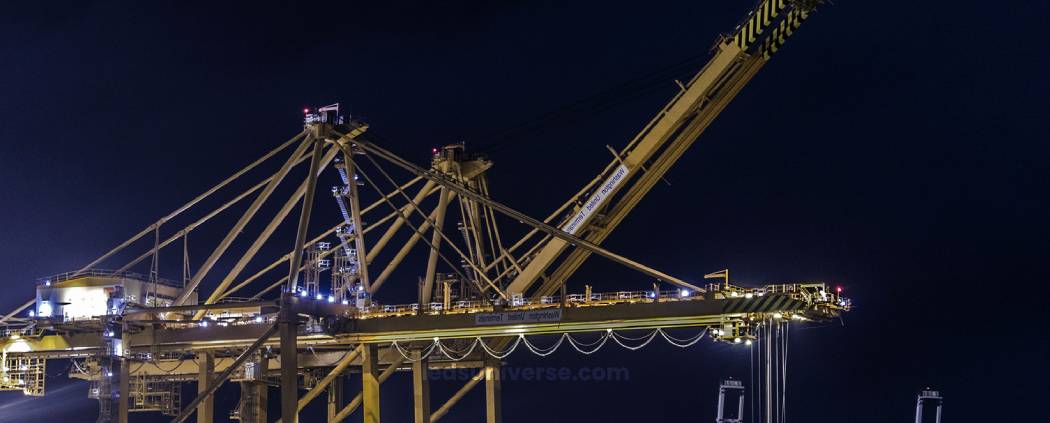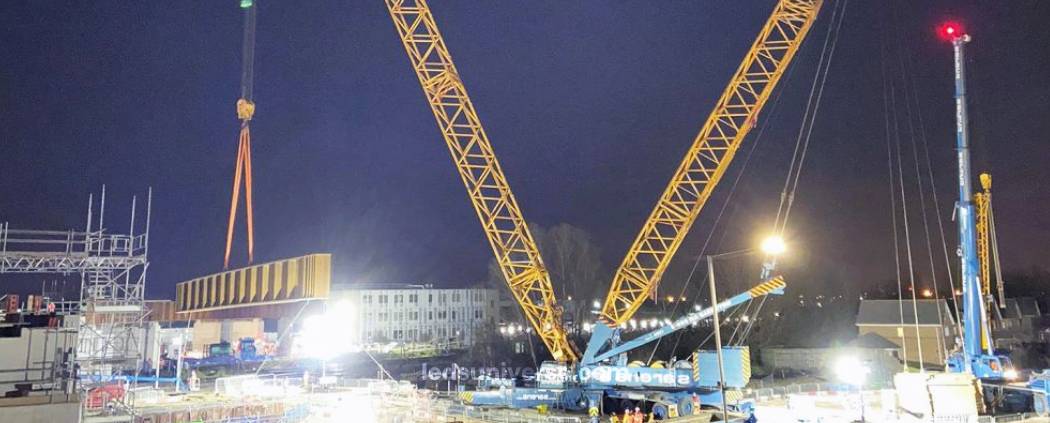Expenses can be categorized into three main areas: initial costs, operational costs, and safety compliance costs. By understanding the breakdown of expenses and exploring cost-saving strategies, organizations can optimize their crane lighting systems while maintaining productivity and compliance.
The expenses associated with crane lighting can vary widely based on several factors, including the type of lighting system chosen, installation costs, operational costs, and ongoing maintenance. This comprehensive exploration of crane lighting expenses delves into the various components of these costs, strategies for budgeting, and potential avenues for cost savings.
Reach out for free lighting consultation
Table of Contents
ToggleExpenses can be categorized into initial costs, operational costs, and safety compliance costs, each of which plays a significant role in the overall expenditure.

| Expense Category | Details | Estimated Cost Range |
|---|---|---|
| Initial Costs | ||
| Purchase Price | Cost of lighting equipment, varying by technology (e.g., incandescent vs. LED). | $100 – $1,000 per fixture |
| Installation Costs | Labor costs for professional installation, affected by site complexity and height restrictions. | $200 – $1,500 |
| Operational Costs | ||
| Energy Consumption | Monthly electricity costs, lower for LED systems compared to traditional lighting. | $20 – $150 per month |
| Routine Maintenance | Regular inspections, bulb replacements, and wiring upkeep. | $50 – $300 per year |
| Safety Compliance Costs | ||
| Compliance Modifications | Costs incurred for system upgrades to meet safety regulations. | $100 – $1,000 |
| Potential Fines | Costs from noncompliance, which can vary significantly based on local regulations. | $500 – $10,000 (variable) |
Initial costs encompass the purchase price of the lighting equipment and the associated installation expenses. The choice of lighting technology is a critical factor in determining the initial cost. Traditional incandescent bulbs may have a lower upfront cost, but their lifespan and energy efficiency are considerably inferior to more modern options like LEDs. LEDs, while generally more expensive at the outset, offer a longer lifespan, lower energy consumption, and reduced maintenance needs, resulting in savings over time.
Installation costs also contribute significantly to the overall initial expense. Proper installation of crane lighting is vital to ensure that lights are optimally positioned for maximum visibility. Depending on the complexity of the setup, professional installation may be necessary, adding to labor costs. Moreover, site-specific challenges, such as height restrictions or the need for specialized mounting equipment, can further impact installation expenses.
After the crane lighting system is installed, ongoing operational costs become a central concern. These expenses mainly consist of energy consumption and routine maintenance. The type of lighting selected can greatly influence energy costs. For instance, traditional lighting options typically consume more energy, resulting in higher electricity bills. In contrast, LED lighting is known for its energy efficiency, often leading to substantial savings in operational costs.
Regular inspections and repairs are necessary to ensure that lighting systems remain functional and effective over time. Bulbs may require replacement, and wiring might need upkeep, which can add to ongoing costs. Establishing a regular maintenance schedule can help mitigate unexpected expenses and prolong the lifespan of the lighting system.
In addition to the aforementioned expenses, safety compliance costs must also be factored into the overall budget. Various regulations and standards dictate the requirements for crane lighting on construction sites. Compliance with these regulations may require specific upgrades or modifications to existing systems, incurring additional costs.
Noncompliance can result in fines and increased liability, which highlights the importance of budgeting for these compliance-related expenses to avoid future financial burdens.
A well-structured budget helps ensure that all components of crane lighting expenses are accounted for, facilitating smoother project management.
The first step in budgeting for crane lighting involves accurately estimating costs. This estimation should encompass all aspects, including initial purchase and installation costs, ongoing operational expenses, and safety compliance costs. Engaging with suppliers and manufacturers can provide valuable insights into pricing structures, enabling more accurate estimates.
Conducting thorough market research on various lighting options also aids in identifying potential savings. Comparing the costs and benefits of different technologies, such as LED versus traditional lighting, can provide a clearer understanding of long-term financial implications. Consulting industry standards and guidelines ensures that estimates align with best practices and regulations.
Allocations should reflect the relative importance of each category of expenses while ensuring that sufficient funds are available for both initial and ongoing costs.
Construction projects are often subject to unforeseen challenges that can lead to increased costs, such as equipment failures or changes in project scope. Having a contingency fund allows for greater flexibility in addressing these issues without disrupting the overall budget.
Effective budgeting for crane lighting expenses also involves long-term financial planning. Understanding the lifecycle costs of lighting systems can inform decisions about initial investments and future expenditures. While lower-cost options may seem attractive at first, their long-term implications on energy consumption and maintenance can outweigh initial savings.
Considering potential advancements in lighting technology is another aspect of long-term planning. As technology evolves, upgrading to more efficient systems may become feasible, further reducing operational costs. Evaluating the expected lifespan of the selected lighting system is crucial in determining when replacements may be necessary, helping to create a more accurate long-term budget.
Implementing cost-saving strategies can help manage crane lighting expenses more effectively. By optimizing choices and processes, organizations can achieve significant savings without compromising safety or operational efficiency.

Selecting energy-efficient lighting options is one of the most effective strategies for reducing operational costs. LEDs have become increasingly popular due to their lower energy consumption and longer lifespan compared to traditional lighting. While the initial investment for LEDs may be higher, their energy efficiency can result in substantial savings over time.
In addition to LEDs, exploring smart lighting systems can enhance energy savings further. These systems can automatically adjust brightness levels based on ambient light conditions or activity levels in the work area. Implementing smart lighting not only conserves energy but also extends the lifespan of the equipment by reducing the amount of time lights are unnecessarily on.
Establishing regular maintenance plans is a proactive strategy for minimizing costs associated with crane lighting. Routine inspections can identify potential issues before they escalate into costly repairs. By adhering to a scheduled maintenance routine, operators can ensure that lighting systems are functioning optimally and can address minor repairs promptly.
Creating a maintenance log can help track the performance of lighting systems over time, providing valuable data for future planning. This documentation can assist in identifying recurring issues, allowing for targeted improvements to the lighting setup.
Exploring available grants or subsidies for energy-efficient lighting systems can provide financial relief and support sustainability goals. Many governments and organizations offer incentives for adopting energy-saving technologies, which can significantly offset the initial costs of upgrading lighting systems.
Researching local programs and grants can unveil opportunities that may otherwise go unnoticed. Engaging with industry associations or local government offices can provide additional resources and guidance in navigating available options.
Investing in training for personnel regarding the proper use and maintenance of crane lighting systems can yield long-term cost savings. Educating operators on best practices for lighting management can lead to more efficient use of resources. For instance, ensuring that lights are only activated when necessary can contribute to lower energy costs.
Creating a culture of safety and responsibility around lighting usage encourages team members to take ownership of equipment and facilities. Raising awareness about the implications of lighting choices fosters a proactive approach to managing expenses associated with crane lighting.
Incorporating technology into crane lighting management can yield cost savings and improved efficiency. Utilizing software solutions for monitoring energy consumption can provide valuable insights into usage patterns and identify opportunities for reduction. Analyzing data from these systems can help inform decisions about when and how to use lighting effectively.
Additionally, integrating automation into crane lighting systems can enhance efficiency. Automated lighting can be programmed to turn on or off based on predetermined schedules, minimizing energy waste. This approach not only saves money but also ensures that lights are utilized optimally.
Establishing strong relationships with lighting suppliers can lead to valuable partnerships that contribute to cost savings. Suppliers often have insights into the latest technologies and trends, which can inform decision-making processes.
Negotiating contracts with suppliers can also result in better pricing or discounts, particularly for bulk purchases. Building a rapport with suppliers may open doors to additional services, such as training or technical support, which can enhance the overall value of the investment.
The primary function of crane lighting is to ensure that work areas are adequately illuminated, allowing operators to perform their tasks without unnecessary risk.
One of the key factors in crane lighting safety is ensuring that illumination levels meet or exceed regulatory standards. Insufficient lighting can lead to accidents, miscommunication, and reduced productivity. Regular assessments of lighting conditions should be conducted to ensure compliance with safety standards and best practices.
Engaging safety professionals to evaluate lighting setups can provide an additional layer of assurance. These experts can recommend adjustments or enhancements to lighting systems, ensuring that they align with current safety requirements.
In the event of a power outage or other emergencies, having backup lighting systems in place ensures that work areas remain illuminated, minimizing risks to personnel.
This proactive approach helps organizations maintain compliance with safety regulations and reinforces their commitment to worker safety.
Providing training for crane operators on the importance of lighting and visibility can enhance safety on construction sites. Operators should be aware of how lighting impacts their ability to perform tasks effectively and the potential hazards associated with inadequate illumination.
Training sessions can cover topics such as identifying poorly lit areas, understanding the significance of lighting in crane operations, and implementing best practices for using lighting systems efficiently.
Managing crane lighting expenses encompasses a comprehensive approach that integrates financial planning, cost-saving strategies, and safety considerations. By understanding the breakdown of expenses, developing effective budgets, and exploring avenues for savings, organizations can optimize their crane lighting systems while maintaining operational efficiency. Prioritizing energy-efficient technologies, establishing regular maintenance plans, and investing in training and awareness create a sustainable framework for crane lighting management. Ultimately, a well-executed approach to crane lighting expenses not only enhances safety and productivity but also contributes to the overall success of construction projects.